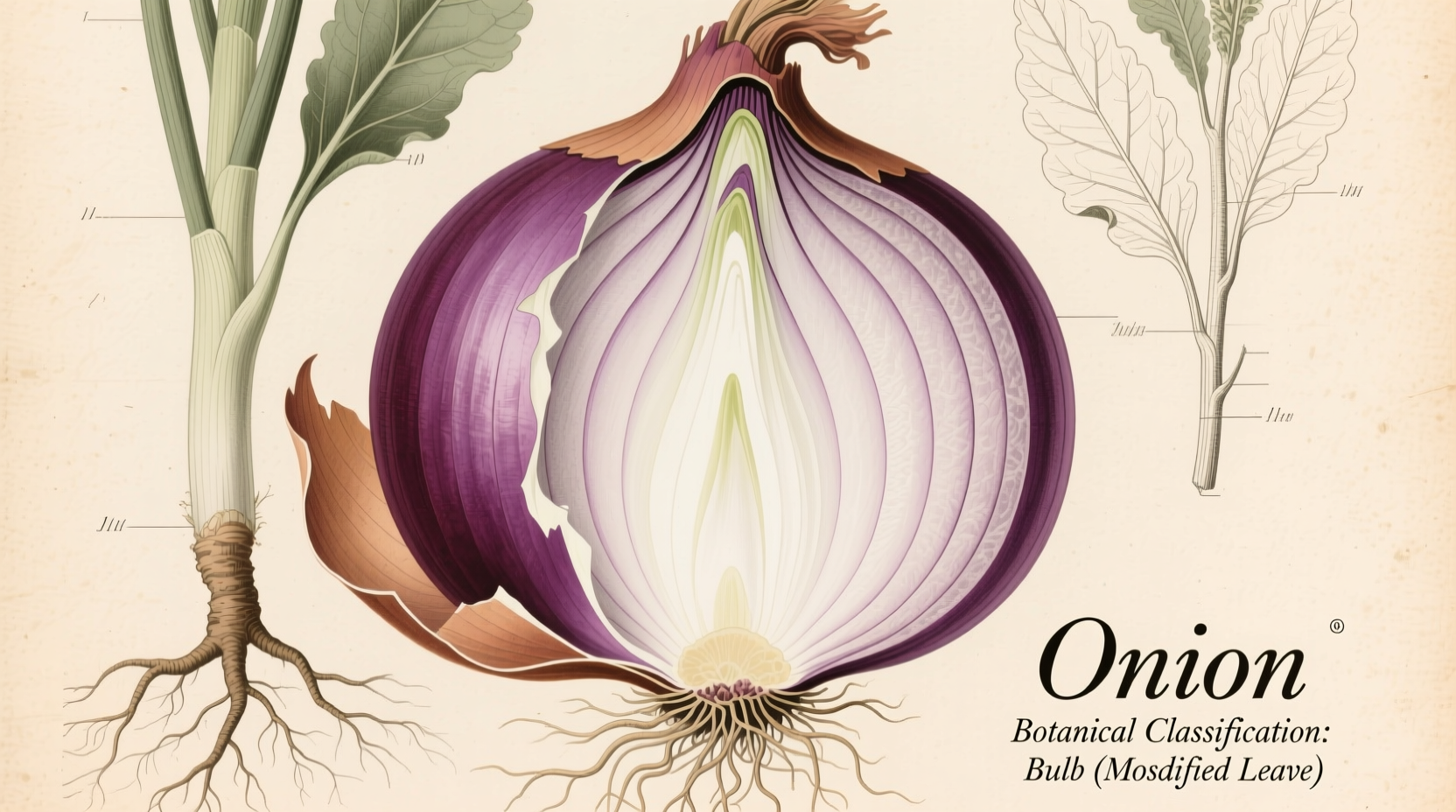Onions are vegetables, not fruits, from both botanical and culinary perspectives. While there's common confusion about this classification, the scientific and culinary consensus is clear: onions belong to the vegetable category. This definitive answer resolves the frequent debate about whether onions qualify as fruits or vegetables.
Have you ever wondered why onions make you cry or whether they're technically fruits? You're not alone. This simple question reveals a fascinating intersection of botany, culinary tradition, and common kitchen confusion. Understanding the true classification of onions helps home cooks and gardening enthusiasts make better decisions in both the kitchen and garden.
Botanical Classification: Why Onions Are Vegetables
From a scientific standpoint, fruits develop from the flowering part of a plant and contain seeds. Vegetables, however, come from other plant parts like roots, stems, or leaves. Onions grow from the bulb of the Allium cepa plant, which is an underground stem modification. This botanical fact places onions firmly in the vegetable category.
The United States Department of Agriculture (USDA) classifies onions as vegetables in their National Nutrient Database, confirming their status in official food categorization systems. Similarly, the Royal Horticultural Society in the UK categorizes onions as vegetables in their comprehensive plant database.
| Characteristic | Fruits | Vegetables |
|---|---|---|
| Plant Origin | Develop from flower | Roots, stems, or leaves |
| Seed Position | Contain seeds | No seeds in edible part |
| Onion Classification | ❌ Doesn't apply | ✅ Bulb (modified stem) |
Culinary Classification: How Chefs View Onions
In the kitchen, classification follows usage rather than strict botany. Chefs and culinary professionals universally treat onions as vegetables because they're used in savory dishes, lack sweetness, and don't contain seeds in their edible portions. Unlike fruits which typically provide sweetness and are often eaten raw as desserts or snacks, onions serve as foundational ingredients in countless savory preparations.
Professional cooking resources like the Culinary Institute of America's curriculum consistently categorize onions as vegetables. This practical classification affects how onions are prepared, stored, and combined with other ingredients in professional and home kitchens worldwide.

Why the Confusion Exists
The confusion about onion classification stems from several factors. Some people mistakenly believe that because onions grow underground, they must be roots like carrots (they're actually bulbs, which are modified stems). Others confuse the botanical definition of fruit with culinary usage.
Another source of confusion comes from certain plants that straddle categories. For example, tomatoes are botanically fruits but culinarily treated as vegetables. Onions don't have this dual identity—they're consistently vegetables in both contexts. The University of California Agriculture and Natural Resources department notes this common misconception in their educational materials about plant classification.
Historical Context of Onion Classification
Onions have been cultivated for over 5,000 years, with evidence of their use in ancient Egyptian, Chinese, and Indian civilizations. Throughout history, they've consistently been treated as vegetables in culinary traditions worldwide. Ancient Egyptian records classified onions as vegetables, and this tradition continued through Roman, Medieval European, and modern culinary practices.
The historical timeline shows no period where onions were considered fruits in any major culinary tradition. This consistent classification across cultures and centuries reinforces their status as vegetables. The British Museum's collection of ancient Egyptian food records shows onions were used as vegetables in religious offerings and daily meals.
Practical Implications for Home Cooks
Understanding that onions are vegetables affects how you use them in cooking. Unlike fruits which often require minimal preparation, onions benefit from techniques like sautéing, caramelizing, or roasting to develop their flavor profile. Their vegetable classification means they pair well with other vegetables in soups, stews, and roasted dishes.
When substituting ingredients, remember that onions won't work as fruit replacements due to their savory profile. However, they can substitute for other allium vegetables like shallots or leeks in most recipes. Proper storage (in a cool, dark, well-ventilated space) preserves their vegetable qualities and prevents premature sprouting.
Common Misconceptions Clarified
"But aren't all underground plant parts roots?" No—onions are bulbs, which are modified stems that store nutrients. True roots like carrots lack the layered structure of onion bulbs. "What about green onions—the green parts are leaves?" Correct, but the edible bulb portion still classifies the whole plant as a vegetable.
Unlike controversial cases like tomatoes or cucumbers (botanical fruits used as vegetables), onions present no classification ambiguity. The American Society of Plant Taxonomists confirms this in their educational resources, noting that onion bulbs develop from stem tissue, not floral structures.
Conclusion: Embracing Onion's Vegetable Identity
Onions' classification as vegetables stands firm across botanical science, culinary practice, and historical usage. This understanding helps home cooks make informed decisions about preparation, storage, and recipe development. Whether you're caramelizing them for French onion soup or slicing them raw for salsa, recognizing onions as vegetables enhances your cooking knowledge and technique.











 浙公网安备
33010002000092号
浙公网安备
33010002000092号 浙B2-20120091-4
浙B2-20120091-4